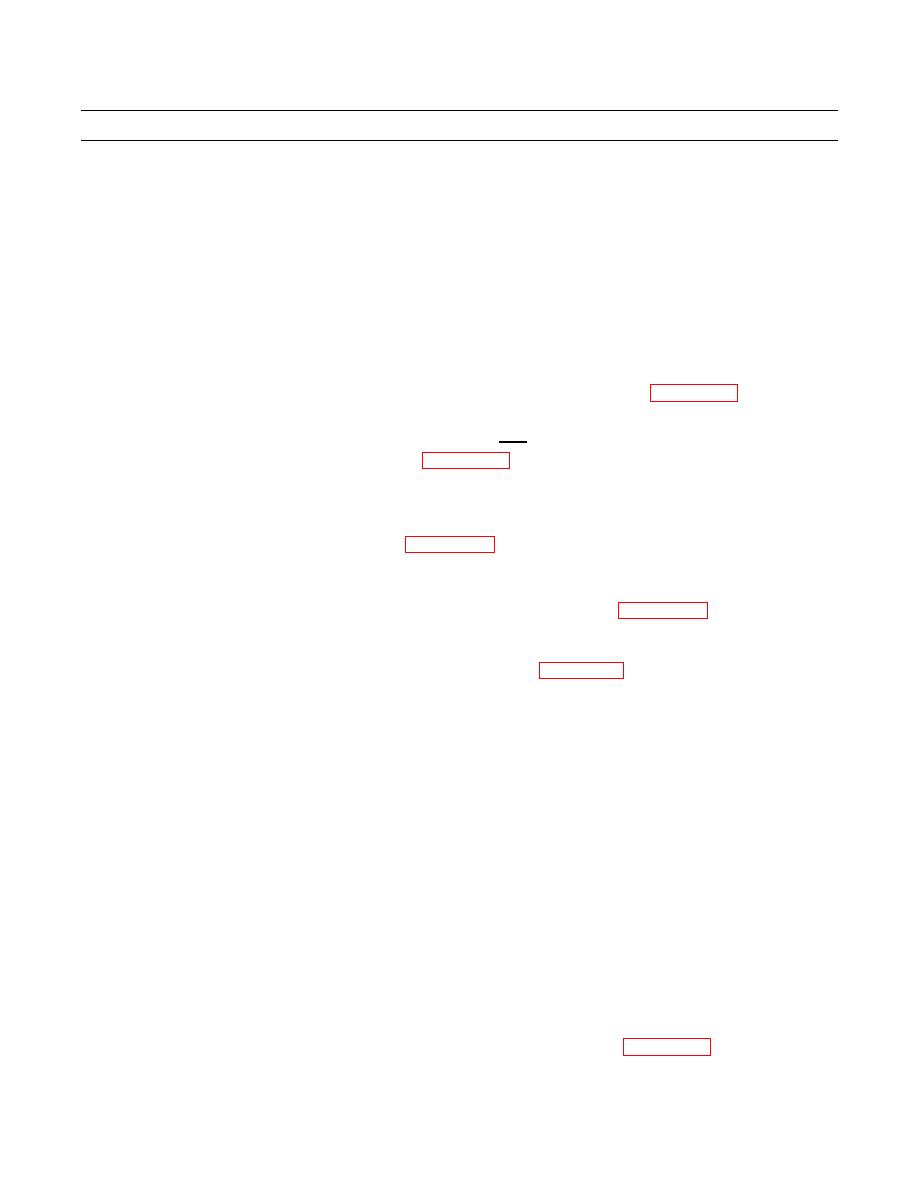 |
|||
|
|
|||
|
|
|||
| ||||||||||
|
|
 TM 9-2320-312-24-1
TROUBLESHOOTING INTRODUCTION
GENERAL
1.
This manual contains troubleshooting procedures for identifying and correcting malfunctions that may develop while
operating the M878A2 Yard Tractor.
2.
Troubleshooting procedures are located as follows:
NOTE
Assembly group numbers for the yard tractor are listed and defined in How to Use This Manual.
a.
In the Commercial Service Manuals, procedures are found in the assembly group section for the component in
question. For instance, troubleshooting for the engine is located within Group 020; troubleshooting for the trans-
mission is located within Group 070.
b.
Troubleshooting NOT covered by commercially-developed procedures can be found in WP 0006 00 of this vol-
ume.
For certain components, troubleshooting may be found in both locations, as referenced in a and b above.
c.
3.
In all cases, the Troubleshooting Symptom Index in WP 0005 00 should be consulted to assist in locating the required
troubleshooting procedures. This alphabetical index lists common malfunctions or symptoms which may occur and
refers you to either (or both) of the following:
a.
troubleshooting located in the Commercial Service Manuals; or
b.
troubleshooting found in a specific Table in WP 0006 00.
4.
It is not possible to list all malfunctions that may occur, nor all tests or inspections or corrective actions. If a malfunction
is not listed, or is not corrected by the listed corrective actions, notify your supervisor.
5.
If you are unsure of the location of an item mentioned in troubleshooting, refer to WP 0002 00 of this manual or to
TM 9-2320-312-10. In addition, Figures 1 and 2 at the end of this work package illustrate the location of electrical,
hydraulic or other vehicle components that may be difficult to locate.
6.
As an aid to the user, air and hydraulic system diagrams are provided in WP 0137 00. Electrical schematics are con-
tained as foldouts at the end of the manual.
7.
Before performing troubleshooting, read and follow all safety instructions found in the Warning Summary at the front of
this manual.
PRELIMINARY TROUBLESHOOTING PROCEDURES
NOTE
Fluid leaks are classified as Class I, Class II or Class III:
Class I: Seepage of fluid (as indicated by wetness or discoloration) not great enough to form
drops.
Class II: Leakage of fluid great enough to form drops, but not enough to cause drops to drip
from item being checked/inspected.
Class III: Leakage of fluid great enough to form drops that fall from item being checked/
inspected.
1.
Before beginning troubleshooting, perform the following:
a.
Visually check for ruptured oil, coolant, fuel or hydraulic lines and for Class II or Class III leaks.
b.
Check for mechanical jamming or binding caused by foreign matter.
c.
Check fluid levels in subject area and service as required (TM 9-2320-312-10 or WP 0009 00 in this manual).
2.
Ensure all applicable Operator Troubleshooting has been performed before proceeding.
|
|
Privacy Statement - Press Release - Copyright Information. - Contact Us |